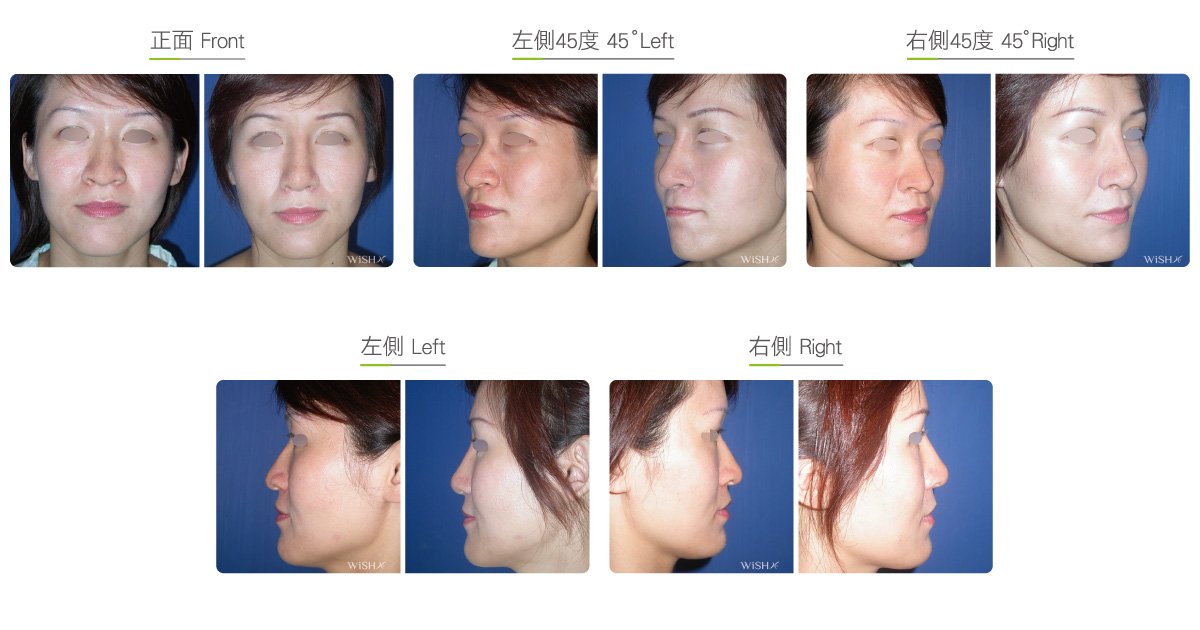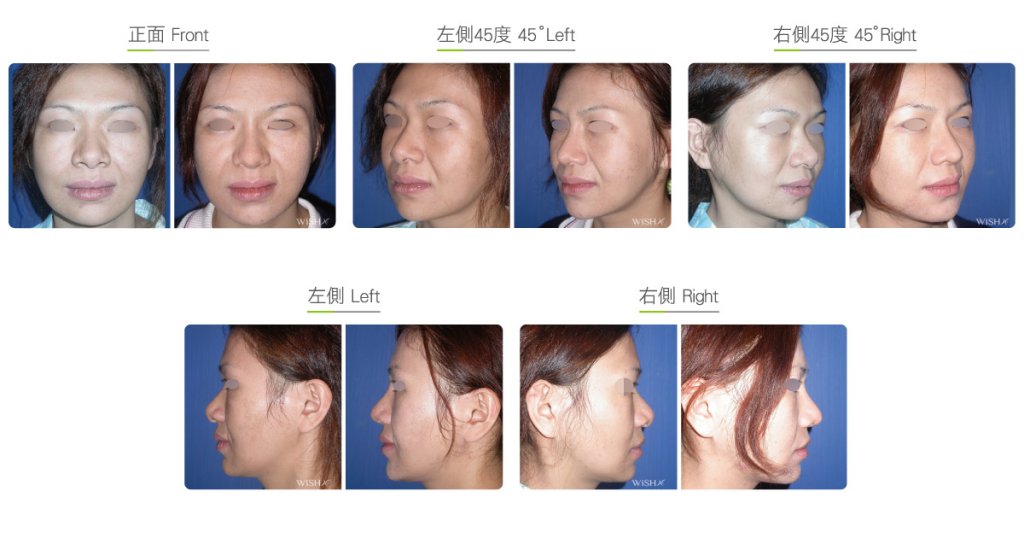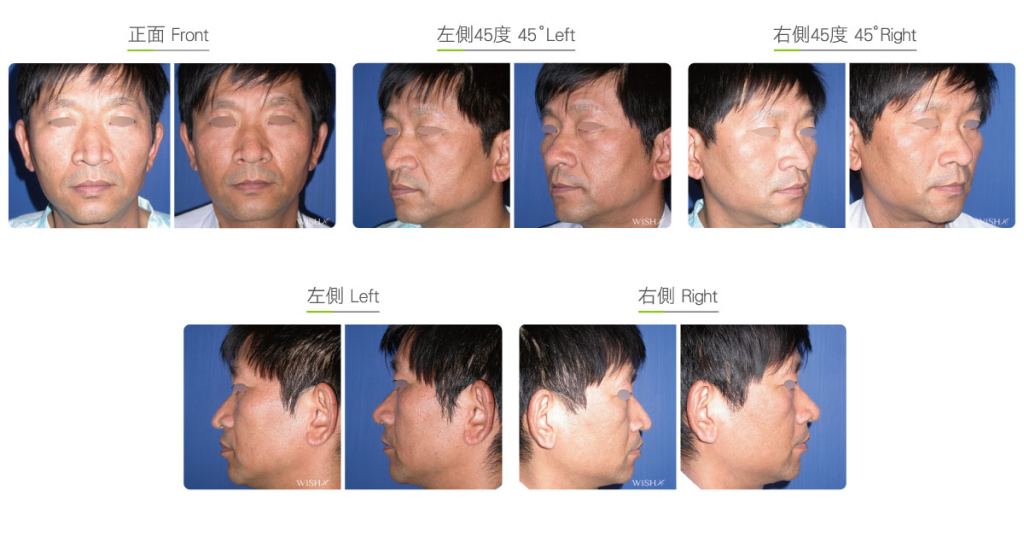Hook Nose Correction
A hook nose, also called an aquiline nose or a Grecian nose, is characterized by an excessively long nasal tip in the frontal view, where the nasal tip completely covers the nasal columella or even conceals part of the philtrum, and the bilateral nostrils present an obvious V shape like a sea gull wing. From the lateral view, the nasal tip is pointed and hook shaped like an aquiline beak, with the angle between the nasal columella and upper palate less than 90° (the standard angle should be 95–105°). This nose shape is rarely seen among Oriental patients but can be improved by surgical intervention as it commonly gives a mature or serious impression. A hook nose primarily results from the congenitally overt development (excess) of the nasal tip and alar cartilage and inadequate support of the nasal columella to the overall nasal tip. For treatment, because the nasal bridge of such patients is generally not low, consideration is given to cartilage correction of the nasal tip (open tiplasty). Surgery focuses on the reinforcement of the nasal columellar structure, where a partial nasal septal cartilage is harvested to boost the strut and strength of the columella, and after the excess inferior nasal (alar) cartilage is partially removed, it is fixated and sutured to the apex of the nasal columella to anterosuperiorly adjust the nasal tip angle to the standard proportion range. In this way, it effectively shortens the frontal visual length of the whole nose and renders the connection line between the nasal tip and ala nasi softer and also alleviates disturbances from an exceedingly pointed or long nasal tip.
Surgical conditions
Duration
- Type of anesthesia: IV sedation + local anesthesia
- Surgical incision: At the bottom of the nasal columella and inside the bilateral nostrils
- Recovery: 5–7 days
- Removal of stitches: 7 days
General instructions
No food and water on the day of surgery
- Avoid smoking and alcohol and impacts or compressions to the nasal tip for 3 months postoperatively, and clean the intranasal wound in the morning and evening every day.
- Abstain from eating raw food, seafood, and irritating food or spices for 3 months postoperatively.
- Avoid exposure of the nostrils to dirty water (sea water, swimming pool or sauna water, and hot springs) and close contact with pets and dust mites for 3 months postoperatively.
Ideal candidates
- Patients with a hooked nasal tip like an aquiline beak
- Those with a long nasal tip that conceals part of the philtrum
- Those who want to change their nose appearance from a mature and serious shape to a youthful appearance
Potential complications
- Cartilage resorption
- Inadequate nasal tip support
- Nostril exposure
- Incomplete correction
Surgical advantages
-
It is able to remodel the nasal tip triangle and correct the problem of an exceedingly long nose.
-
It is able to sculpt a harmonious nose with a youthful appearance.
Surgical drawbacks
-
The nasal tip may become upturned a little bit and the nostrils may become relatively exposed.
-
The long term support of nasal tip may differ due to the degree of autologous cartilage resorption.
-
Without strong columella support the nasal tip may show ptosis again.



